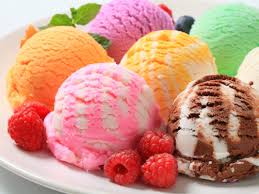College Students Learn the Physics of Making Ice Cream
November 15, 2015 A class at Boston University teaches students the science behind the making of some of their favorite foods, including ice cream. Professor Rama Bansil teaches the Physics of Food/Cooking course.
A class at Boston University teaches students the science behind the making of some of their favorite foods, including ice cream. Professor Rama Bansil teaches the Physics of Food/Cooking course.
The course teaches students about phase transitions, or the processes by which things change between the states of solid, liquid, and gas. The course explores the physics of soft materials. Bansil teaches about the physics of cooking to attract nonscience majors and get them interested in thermodynamics, molecular physics, and molecular biology so they have a better appreciation of what happens to food as it is cooked.
When making ice cream, it is important to minimize the amount of ice used. The milk and cream should be cooled down until they freeze and become thick, but ice crystals should not be allowed to form.
Before modern ice cream machines were invented, glaciers, or French ice cream makers, would line buckets with salt and ice and churn the liquid ingredients. Salt lowers water’s freezing point. This made the bucket very cold so the ice cream would harden quickly and prevent the formation of large ice crystals.
Bansil says the best way to make ice cream is to use liquid nitrogen. That is one method that is explored in the class. Liquid nitrogen is so cold that it boils at -320 degrees Fahrenheit. Anything that comes into contact with it freezes almost instantaneously. The water molecules solidify before they have an opportunity to form ice. When liquid nitrogen is poured into a bowl of cream, milk, and sugar, it freezes in just seconds and produces ice cream with microscopic ice crystals and a smooth texture.
Making ice cream with liquid nitrogen is not possible for most people. Bansil says when making ice cream at home using more traditional methods, it is important to stir the mixture continuously to prevent ice crystals from forming and to use cream, not gelatin or condensed milk. The secret is to keep ice crystals microscopic and to get the right amount of fat and air in the mixture.
The course covers other topics, such as the physics of baking cupcakes and cooking steak. Students are enthusiastic about the class and say that it has enhanced their appreciation of cooking and increased their interest in science.

